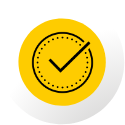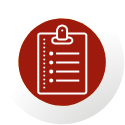The USA is a highly sought-after destination for Indian students seeking higher education due to its prestigious institutions like Harvard University, MIT and many more. We can help ensure you don't miss important deadlines and secure a seat in your preferred college.
This guide will cover the most common student visa types and provide insight into the visa procedure.
F1 Visa
The F-1 Visa is for non-immigrant students coming to the US for higher education. The F-1 Visa is issued to international academic students at US Embassies and Consulates. Extensions and changes to the Visa can be done in the US. Students can stay for 60 days after their course with F-1 Visa or work for a year with OPT. The I-20 form, issued by the university, has an expiration date for completion of education.
J1 Visa
The J-1 Visa is designed for students, scholars, and professors participating in exchange programs in the United States, allowing individuals to gain valuable educational or professional experience. To obtain a J-1 student visa, it is crucial to apply well in advance of your intended arrival. The visa process can take several weeks or even longer in some cases.
Those applying for the J-1 Visa can bring their spouses or children, who can apply for the J-2 Visa. While J-1 and J-2 exchange visitors can obtain visas before their program starts, the process to issue immigration documents only begins after accepting an admission offer and receiving the student record from the school. This typically occurs around March in most cases. Detailed instructions for the visa application process can be found on the consulate website where you plan to apply.
J-2 Visa holders have the option to study, work, or apply for an employment authorization document to work in the US. However, it's important to keep in mind that J-2 Visa holders may face certain restrictions.
M1 Visa
An M-1 student visa allows international students to attend full-time technical, vocational, or other non-academic programs in the United States. The M-1 visa shares similar processes and eligibility requirements with the F-1 visa, which is for non-U.S. citizens seeking full-time enrollment at academic institutions, such as universities, high schools, conservatories, or language schools
Student Visa Procedure
Let’s go through the visa application procedure
Online Application
You must first complete the online non-immigrant visa application and the DS-160 Form and print the application confirmation page. Additionally, it is recommended to print and keep the DS-160 barcode page after completing the form and attach a photo using the format provided on the website. Ensure your photo matches the passport photo requirements.
Book An Visa Interview Appointment
To proceed with your visa application, it is necessary for you to schedule an interview with the US Embassy/Consulate. You can do this by selecting the most convenient location from the list provided by the Embassy/Consulate. Please note that the waiting time for the interview appointment may differ based on the visa category, location, and season.
Application Visa Fees Payment
After your acceptance into the university, you will be required to submit payment for the SEVIS I-901 fee as a part of your enrollment in the Student and Exchange Visitor Information System (SEVIS). The fee for F and M visa types is $350, while the fee for J visa types is $180. The visa is typically valid for the length of the program, plus 60 days to allow you to return home before it expires.
Required Documents
Let's review the general document requirements for student visas, regardless of the specific category (F1, J1, or M1 visa):
- Form DS-160 confirmation page
- Visa application fee payment receipt
- Photograph
- Form I-20
- Academic documents:
- Transcripts
- Diplomas Degrees
- Certificates from school etc.
- Evidence of financial support and a SEVIS I-901 fee payment receipt (you must pay this fee before applying for your visa).
Schedule Your Appointments
For visa application to the United States, you must schedule two separate appointments. The first appointment is to visit a Visa Application Center (VAC) to have your fingerprints and photograph taken. You will need to schedule this appointment at least one day prior to your second appointment, which is the visa interview at the U.S. Embassy or Consulate.
To schedule your VAC appointment, you will need to choose one of the five available locations and provide personal information such as your name, type of visa required, dependents, and appointment center location.
After completing your VAC appointment, you will need to schedule your visa interview appointment at the U.S. Embassy or Consulate. During this appointment, you will be asked questions about your visa application and supporting documentation. Providing accurate and complete information during both appointments is important to ensure a smooth application process.
Please note that the waiting time for these appointments may vary depending on the location, season, and type of visa you are applying for. We recommend that you schedule these appointments as soon as possible to allow sufficient time for processing.
Attend The Interview
In order to attend your scheduled interview for the US student visa, it is crucial that you bring all the necessary documents and records with you. Upon arriving at the Visa Application Center (VAC), you will be required to have your digital fingerprints and photographs taken.
On the day of your scheduled interview at the US Embassy/Consulate, a Consular officer will interview you to assess your eligibility for a US student visa. This interview is a crucial step in the visa application process and requires your utmost attention and preparation. Be ready to answer questions related to your educational background, finances, and travel plans to the United States.
Learn More About Expected Questions During The Student Visa Application Interview.
Fees Payment
After obtaining your student visa for the United States, you'll need to complete the payment of the Visa Issuance Fees and follow the subsequent procedures for retrieving your passport and visa paperwork.
Finding it challenging to gauge steps towards U.S. University Admissions?
Eligibility criteria:
If you are applying for a student visa, you need to consider certain points. The U.S. student visa eligibility criteria are pretty simple. You need to enrol in a full-time course, have the required financial resources to pay for your tuition, accommodation, and other expenses, and meet several other criteria.
For non-immigrant categories, applicants must go through the process of vetting and approval from either USCIS or SEVIS and/or the Department of Labor. Whether you are a business traveller or an athlete, you need to ensure that you meet all of the criteria set by your visa category and understand what type of visa would best suit your purposes.
Career Options

Arts and Humanities
If you are interested in a degree program related to Art and Design, English Literature and Language or Cultural Studies, then studying Arts and Humanities in the U.S. is ideal for you.

Science
Some of the top-ranked universities offer degrees in basic sciences such as Physics, Chemistry, Mathematics, Biology and Computer Sciences etc.

Engineering
It is one of the most popular fields of study for international students. Many top-ranked universities in the U.S. offer advanced engineering programs such as Aerospace Engineering, and Chemical Engineering, etc.

Social Sciences
If you want to pursue your career in Sociology, Psychology or law, then Social Science is a good option for you.

Business Administration
Business Administration is another popular option for international students who wish to pursue their careers in business fields. With a degree in Business Administration, you can get job opportunities around the world.
Services you enjoy with Amratpal a Vision
- Assistance through experts for University Selection & Shortlisting
- University Applications
- Education Loan and Fees Payment
- Student Visa Application & Guidance
- Health Care Insurance
- Pre Departure Sessions
Timeline

Eligibility check
Determining eligibility for study or exchange program in the United States

Apply for SEVP
Apply to and be accepted by a Student and Exchange Visitor Program (SEVP)-approved school in the U.S. (Suggested: 6 to 12 months before U.S. study).

Pay Fees
Pay the Student and Exchange Visitor Information System (SEVIS) fee.

Complete Student Visa Application
The application form has different sections, namely: Personal Information, Academic Information, Employment History, Financial Support and Medical History. Apart from these sections, two additional sections are Additional Information and Declaration (Optional).

Pay the visa application fee.
To apply for a visa, you will need to pay a non-refundable visa application fee

Schedule and attend the visa interview.
The U.S. embassy or consulate will contact you to schedule an interview. This will be a short appointment, typically 10 minutes long. Bring the documents described above with you, along with any additional documents requested by the embassy or consulate.
